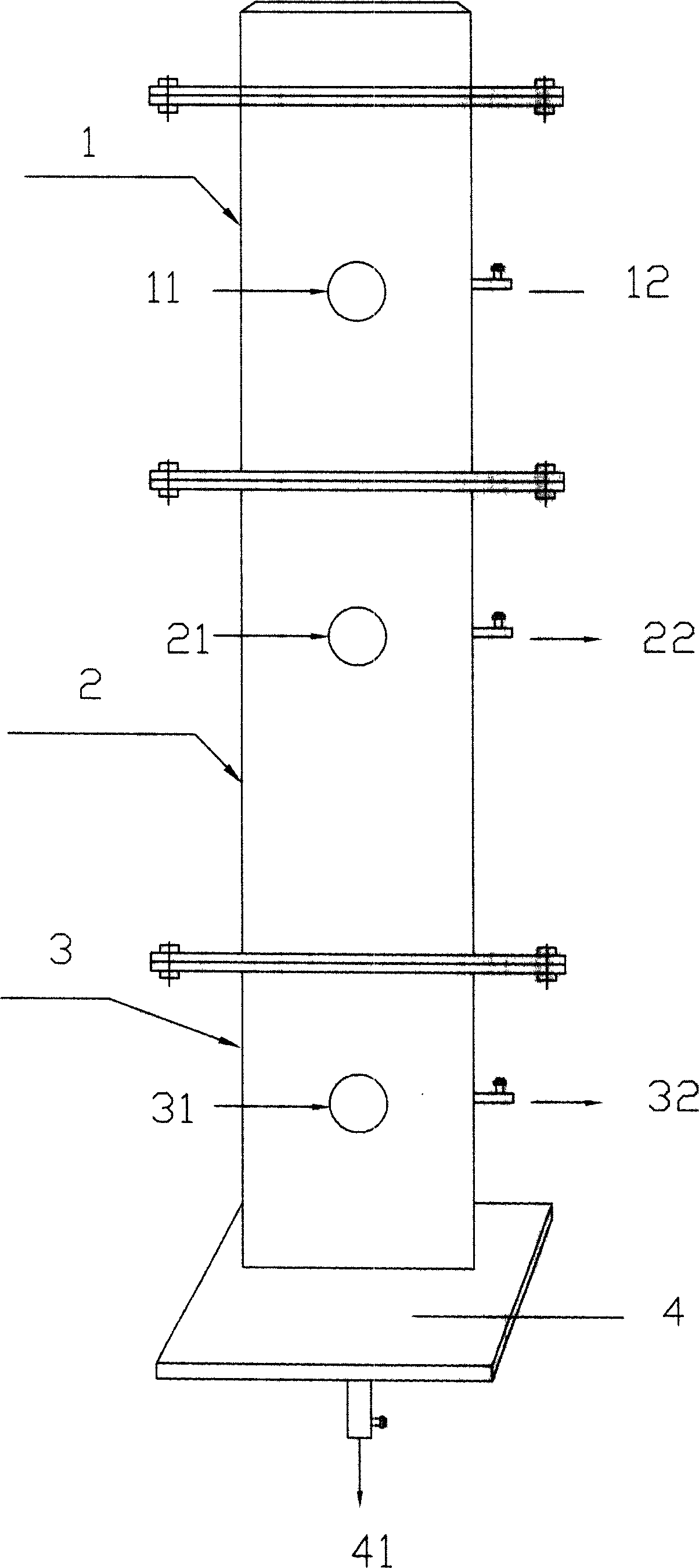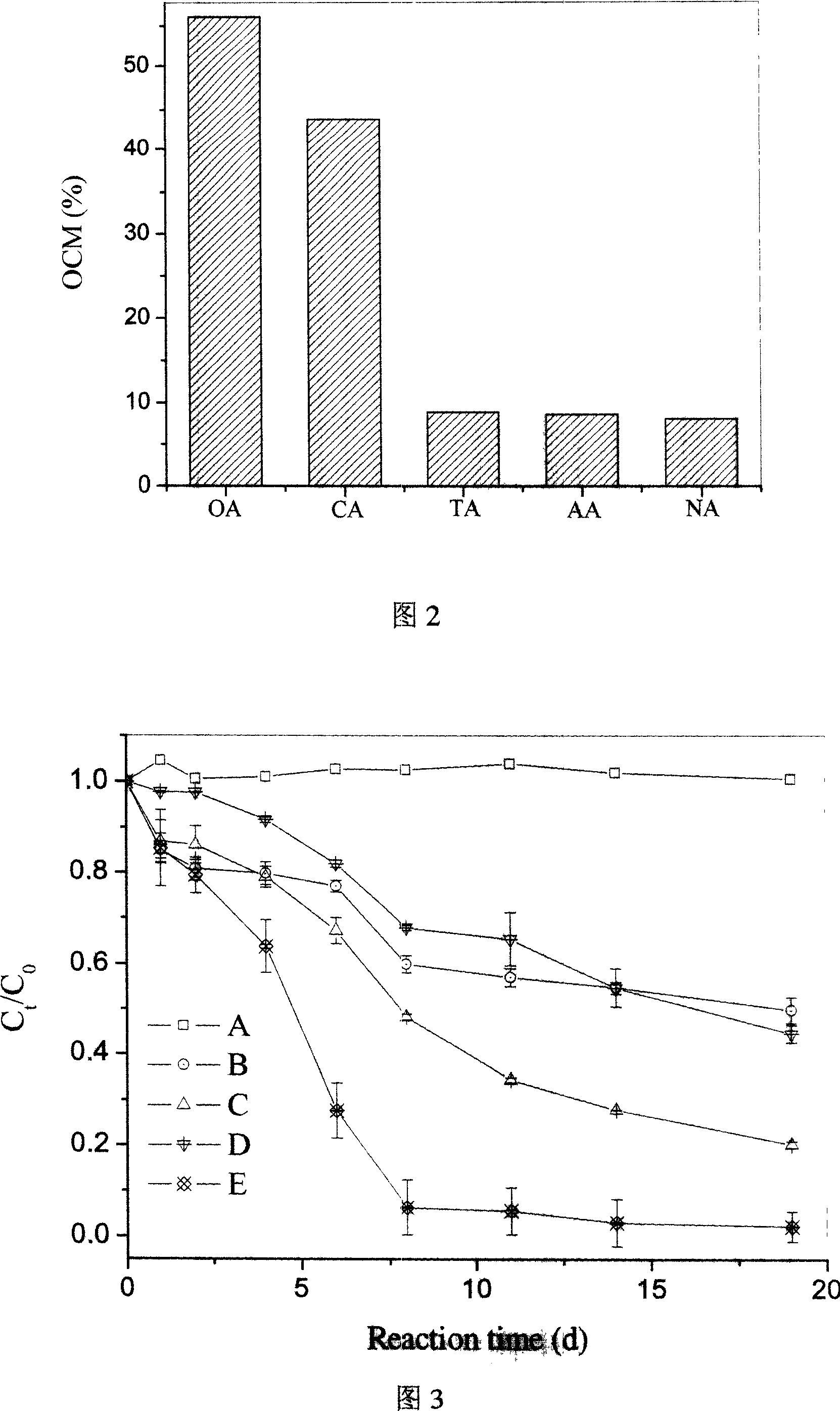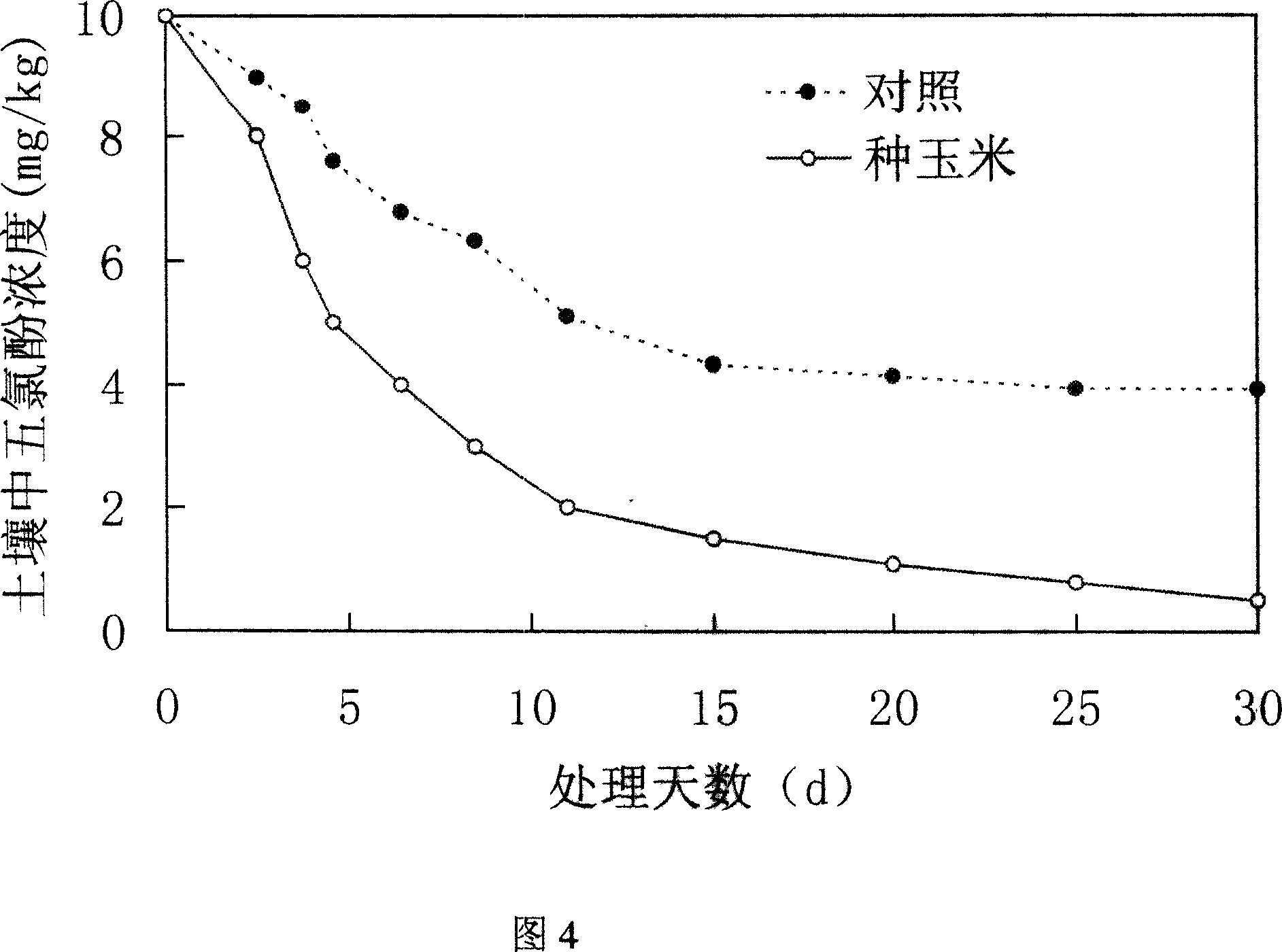Method for accelerating deoxidization, degradation and transformation of organic contamination in soil
A technology for organic pollutants and soil, applied in the field of accelerating the reduction, degradation and transformation of organic pollutants in soil, can solve problems such as accelerating the reduction, degradation and transformation of organic pollutants, achieve the utilization and exertion of the natural self-purification ability of the soil, and improve the self-purification ability and effect of the soil. Good results
- Summary
- Abstract
- Description
- Claims
- Application Information
AI Technical Summary
Problems solved by technology
Method used
Image
Examples
Embodiment 1 0
[0035] Embodiment 1 Zero-valent iron handles pentachlorophenol
[0036] The dosage of iron powder is 3g / L, the initial concentration of pentachlorophenol is 10mg / L, and the pH is adjusted to 3.00 with different organic acids (such as oxalic acid, acetic acid, citric acid, tartaric acid, etc.), inorganic acids (such as nitric acid) and NaOH , the experiment was carried out under the condition of avoiding light and passing nitrogen. A system without zero-valent iron was used as a control.
[0037] Samples were taken at regular intervals, the aqueous phase was tested for chloride ions, the organic extraction was constant to measure pentachlorophenol, and the treatment efficiency of zero-valent iron was analyzed. The results showed that the removal efficiency of pentachlorophenol was high. Since the higher the content of chlorine in organic chlorine, the higher its toxicity, and in order to avoid the measurement error that may be caused by the process of organic solvent extractio...
Embodiment 2
[0040] Embodiment 2 soil colloids process pentachlorophenol
[0041] Two kinds of paddy soil surface soil colloids, Zini field and Qianjiao Zini field, were selected, and the primary equilibrium research method was adopted. The initial concentration of pentachlorophenol was 10mg / L. After adding 20ml of the reaction solution filled with nitrogen and oxygen for 24h in a 20ml vial, Then add 0.20g of soil colloid (10g / L), cover with a rubber cover, fill with nitrogen and de-oxygenate for 10 minutes, add an aluminum cover to seal, place in a constant temperature shaker at 25±1°C and shake continuously (200rpm), and take samples for analysis at regular intervals. At the same time, the treatment without soil colloid was set as the control. The results showed that the two kinds of soil colloids had a certain reduction and transformation effect on pentachlorophenol in solution, and the degradation of pentachlorophenol by soil colloids under the two conditions was in line with the appar...
Embodiment 3
[0042] Example 3 Planting corn to accelerate the degradation of organochlorine in the soil column test
[0043] Based on the high production of organic acids in the root system of corn during the growth process, the experiment was designed: as shown in Figure 1, in the soil column reactor, zero-valent iron / soil weight ratio of 1:1-10 was blended with contaminated soil to fill the soil column In the reactor, use dilute acid to adjust the pH of the soil column system to be slightly acidic (6.0-6.5), add pentachlorophenol to an initial concentration of 10mg / kg, plant corn on the soil column, and plant 3 seeds on each soil column, so as not to plant corn soil column as a control. Soil samples were collected periodically for analysis. The results show that planting corn can significantly accelerate the degradation rate of pentachlorophenol in soil and improve the degradation ability of zero-valent iron to pentachlorophenol in soil (as shown in Figure 4). After 30 days of the expe...
PUM
| Property | Measurement | Unit |
|---|---|---|
| size | aaaaa | aaaaa |
Abstract
Description
Claims
Application Information
 Login to View More
Login to View More - R&D
- Intellectual Property
- Life Sciences
- Materials
- Tech Scout
- Unparalleled Data Quality
- Higher Quality Content
- 60% Fewer Hallucinations
Browse by: Latest US Patents, China's latest patents, Technical Efficacy Thesaurus, Application Domain, Technology Topic, Popular Technical Reports.
© 2025 PatSnap. All rights reserved.Legal|Privacy policy|Modern Slavery Act Transparency Statement|Sitemap|About US| Contact US: help@patsnap.com



